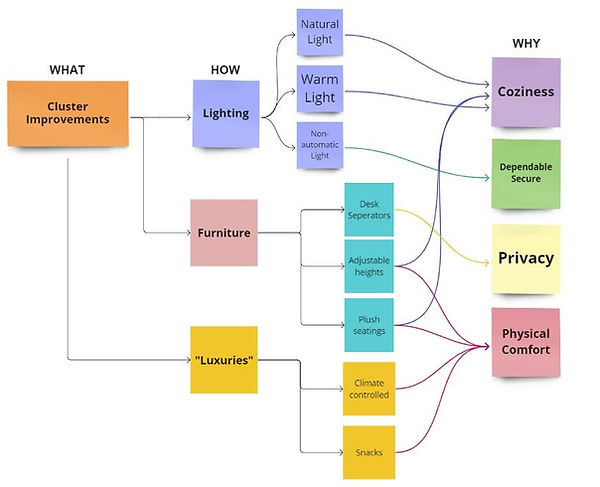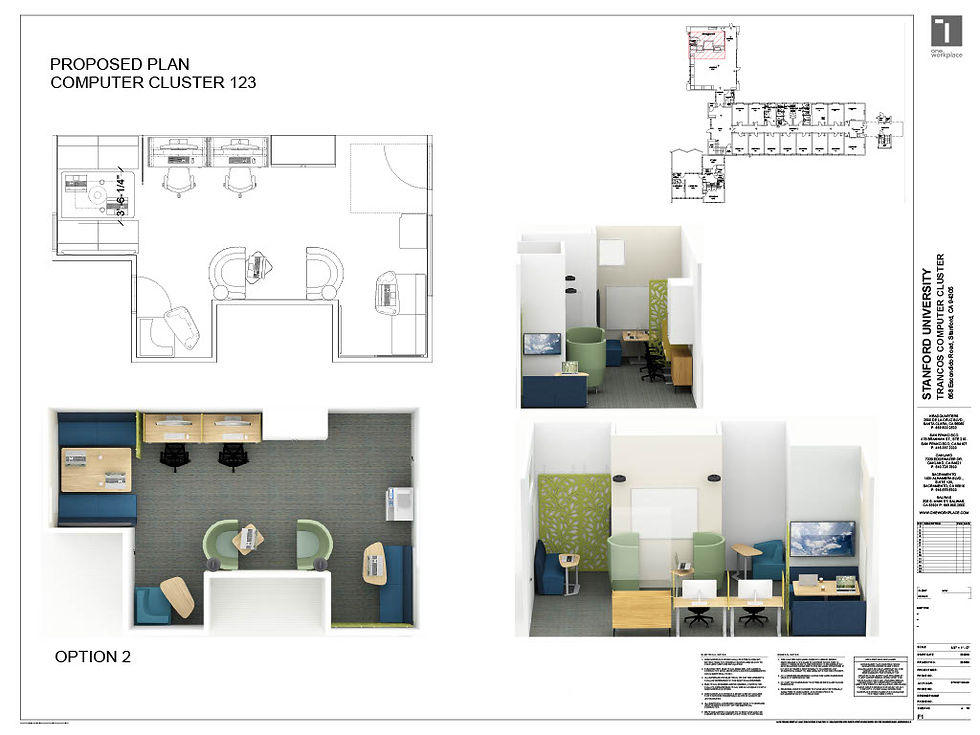
Lathrop Technology Services
UX research to increase utility and satisfaction in learning spaces and services
Introduction
The Lathrop Technology Services is an organization at Stanford University that provides technology equipment and maintenance of campus-wide computer clusters.
This initiative focuses on researching and designing user experiences within computer clusters. Through user studies, I examined existing inefficiencies and employed data-driven approaches to direct interior redesign solutions.
Role: Lead UX researcher & experience designer
Skills: User Interviews, Qualtrics, Tableau, Wireframing
Time: March 2023 - Ongoing
Team
Shruthi Sathish / Senior Data Analyst
Helen Chu / Senior Director
Arik Broman / Technical Operations Manager
Project Motivation
Despite Lathrop's maintenance efforts and equipment upgrades aimed at enhancing student utility, there was a disconnect between these intentions and the actual needs of the students
The purpose of this research is to identify user needs and determine the most effective ways to invest and optimize the usage of these spaces
Design Outcomes


Before
After
Become the User
Stage 1: Generative Interview
WHAT: Conducted user interviews to gauge current sentiments
WHY: To gather an understanding of users’ current interactions (or lack of) with the computer cluster. Specifically, I wanted to know the following:
-
Average usability of the cluster space
-
How do students feel about the current state of the cluster?
-
Does the current setup accommodate students’ studying habits?
The metric of success for this stage is answering the aforementioned questions through unbiased, and structured interviews (specifics discussed in study design).


Figure 1

Mapping User Journey
Insights on Current Problems
The results of the user interviews led to the following key takeaways:
-
Study Habits: students spend a large amount of time at desktops completing tasks outlined in Fig. 1
-
Current sentiments: sensor-activated lights caused distractions during students' worktime and meetings. Lack of privacy based on desk setup makes student feels uneasy. Unadjustable furniture is uninviting for long-term users.
-
Identifying Needs: users want lighting and furniture changes to create an inviting, comfortable, and secure studying space

Surveys
Stage 2: Conducting Surveys
My name is Alexa Young
WHAT: Worked with data analyst to survey students on cluster redesign preferences
WHY:
This survey is conducted to quantify the findings in the generative interview. Specifically, we want to:
-
Quantify the levels of current cluster usages
-
Scope specific needs for interior design solutions. For example, what furniture is ideal for providing comfort, privacy, security, and coziness?

Survey Takeaways
-
Most users visit the space in the afternoon at the frequency of 1-3x per week for mostly 0-3 hours per session
-
There is a 1:1 ratio of spatial need for individual versus collaborative work
-
Most students rely on their personal devices over provided iMacs in the cluster

Frequency of users' usage(s) of the cluster per week
Activties conducted by students in the space

Items typically used by students in the cluster space

High-fidelity prototype
We worked with One Workplace for our interior design plan. All floorplans proposed below are works done by One Workplace







